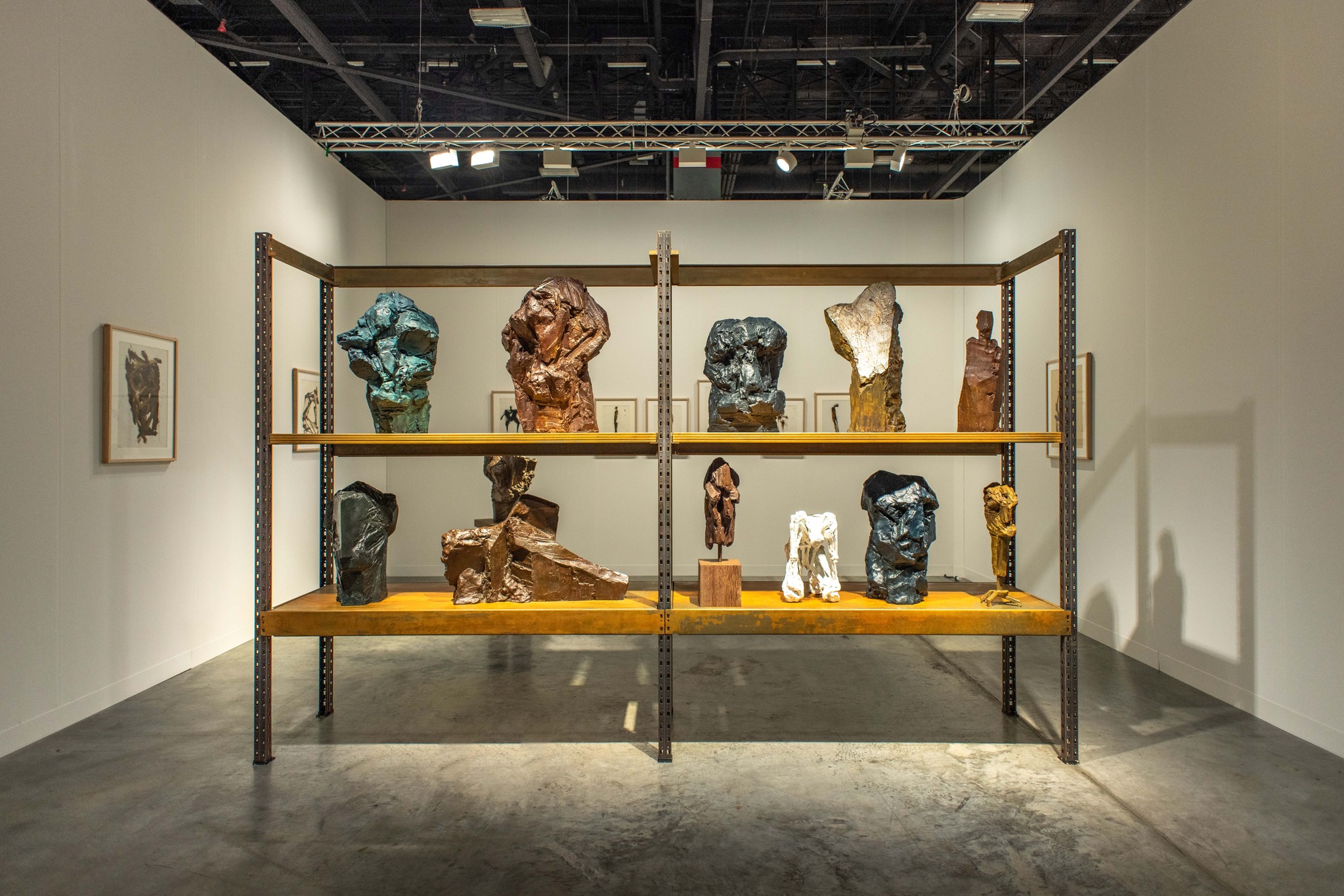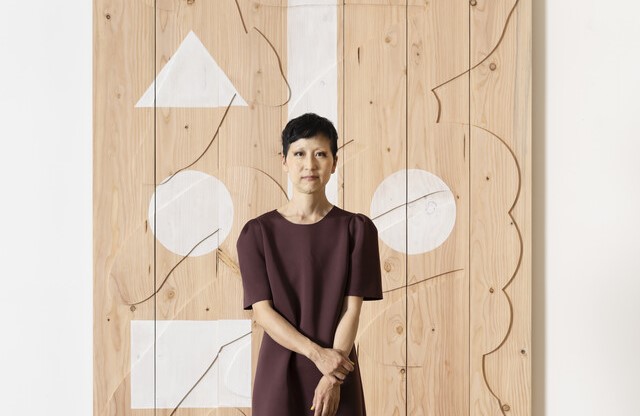Yeondoo Jung, who crosses the boundary between fiction and reality with photography, video, and performance, will hold a solo exhibition as part of the MMCA Hyundai Motor Series 2023 from September to February 2024.

Jung Yeondoo. Photo by Cho Chulim. Image provided by MMCA.
At least once in our childhood, we had the experience of taking out a blanket, wrapping it around our body, and imagining ourselves as the protagonist of a story at a playground. We all knew the blanket wasn’t a real cloak or dress, and the playground wasn’t a place for dangerous adventures, but those things were enough to let your imagination run wild.
Artist Yeondoo Jung’s (b. 1969) media artworks somehow evoke such childhood memories. Jung, who crosses the boundary between fiction and reality, works with photography, video, and performance. In his works, the fictitious nature of the depicted scenes is obvious, but they somehow inspire the viewer’s imagination.
Although he majored in sculpture, Jung is fascinated by the ability of photography to capture what is seen as it is, and he frequently works with the medium. To the artist, photography is a memory box that can bring back the past, a tool for recording that faithfully shows the appearance of reality, and a medium that creates a story.
 Yeondoo Jung, Location #5, 2005, 120x150cm, C-Print Bewitched #2, 2001, 120x150cm, Diptych, C-Print.
Yeondoo Jung, Location #5, 2005, 120x150cm, C-Print Bewitched #2, 2001, 120x150cm, Diptych, C-Print.In 2003, Jung held his second solo exhibition, Bewitched, at Art Space Loop, an alternative space that played an important role in the Korean contemporary art world. For this exhibition, the artist interviewed 13 young people from six countries and projected a set of two photo portraits of each person, one that showed their current status and the other presumably taken after achieving their dreams.
In this series, the image of a girl holding a mop in a Baskin-Robbins store in Seoul is compared to that of a female warrior holding a spear to hunt in the snow. A young man in Istanbul who sold black tea for a living became a math teacher, and a boy who was an unknown singer in a Chinese bar became a pop star.
The portrait of the warrior does not mean that the Baskin-Robbins girl has really had a chance to travel to Antarctica. The snowy landscape was actually the mountains in Korea, the igloo was made of paper, and the two Siberian huskies were someone’s pets in Seoul. Yet, just as in our childhood when we were able to imagine real adventures with mere blankets and playgrounds, the Bewitched series stimulates the viewer’s imagination, adding more layers to the people we see in the portraits.
The series was inspired by the 1960s American TV series Bewitched, in which the main character of the drama, a witch, achieves her goals through the use of magic. Since cinematography techniques were not as advanced as they are today, directors used very simple camera controls to create magical scenes. One of the techniques was to stop the camera in one scene, change the background and costumes, and then turn on the camera again with the actors in the same pose just before it was stopped. Jung used this technique in this series.

Yeondoo Jung, Location #5, 2005, C-Print, 120x150cm.
Since his childhood, Jung has been fascinated by large-scale film sets in movies, especially in Hollywood films from the 1950s that provided astounding visual experiences. Later, he attempted to realize these experiences in his artworks by revealing the behind-the-scenes. While Jung had often dealt with the subject of dreams, when he created the Location series in 2007, the direction of his work shifted more toward subjects of connection and communication.
“Location” is used as a term to refer to the actual location where a film or television series is produced, in addition to sets. In the Location series, the artist infuses reality with imagination and evokes memories by creating scenes reminiscent of old movies by adding tacky movie props to real locations.
 Exhibition View: Yeondoo Jung, Noise Quartet , 2019, 4 channel videos, Full HD, Color, 4 channel sounds, 29 min 12 sec. Taiwan Contemporary Culture Lab, Taiwan.
Exhibition View: Yeondoo Jung, Noise Quartet , 2019, 4 channel videos, Full HD, Color, 4 channel sounds, 29 min 12 sec. Taiwan Contemporary Culture Lab, Taiwan.The artist also incorporates these fake scenes and landscapes into his video work. In 2007, Jung created a video work, Documentary Nostalgia, to participate in the Korea Artist Prize exhibition at the National Museum of Modern and Contemporary Art (MMCA). The piece received great public attention, as Jung became the youngest artist to receive the Korea Artist Prize at the age of 38. In the following year, the piece was added to the collection of New York’s Museum of Modern Art (MoMA).
Documentary Nostalgia is a 70-minute video work filmed in one take without going through the post-production process of film editing. The video, taken in the second gallery of the MMCA, consists of six scenes: a room, a city street, a rural landscape, a field, a forest, and a sea of clouds. The video shows the whole process of 20 staff members in orange overalls setting up the set, replacing and removing the background and props, and the actors acting and taking a break.
Rather than smooth and refined scenes, the artist intended to create a situation similar to watching magic while knowing all the tricks through the use of the one-take method that reveals the whole filming process. As if revealing a reality full of seams, the artist attempts to confess that “this is the reality happening here, and it is not simply a story about a dream.”
 Video still: Yeondoo Jung, Noise Quartet , 2019, 4 channel videos, Full HD, Color, 4 channel sounds, 29 min 12 sec. Taiwan Contemporary Culture Lab, Taiwan.
Video still: Yeondoo Jung, Noise Quartet , 2019, 4 channel videos, Full HD, Color, 4 channel sounds, 29 min 12 sec. Taiwan Contemporary Culture Lab, Taiwan.Noise Quartet (2019), one of Jung’s recent projects, consists of four videos: a video of a day spent with young people who took part in the Hong Kong protests, an interview video with a mother who built the “May Mother’s House” for mothers who lost their children during the Gwangju Democratization Movement in 1980, a video of an old man who was imprisoned for being involved in Taiwan’s Kaohsiung Incident, which was a crackdown on pro-democracy demonstrations, and a video of a day spent interviewing people such as Mr. Sakima, who built a peace museum in Okinawa to fight against war.
The video work shows the stories of four completely unrelated places, and the history in the subtitle is presented in a completely different context than the video. Through the structure of these subtitles and video images, which are like an ensemble of a quartet, the artist aims to show that the stories and people of the four places are interconnected. Jung hopes to add more stories from different Asian countries to this project and expand the history of democratization in modern and contemporary times.
Yeondoo Jung will hold a solo exhibition as part of the MMCA Hyundai Motor Series 2023 from September to February 2024. The large-scale exhibition will feature four new works and the video-based installation Century’s Journey, which explores the Korean diaspora in Mexico from the early 20th century.















